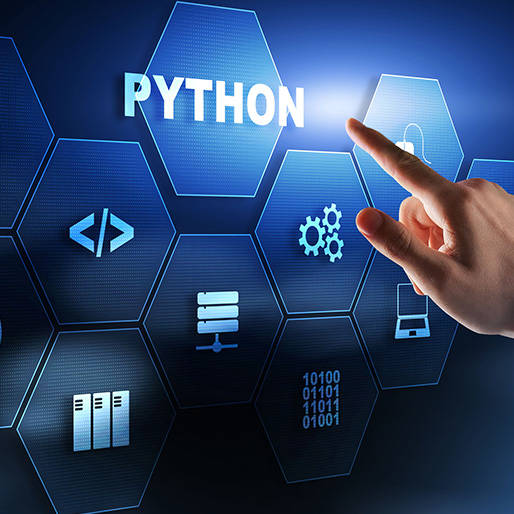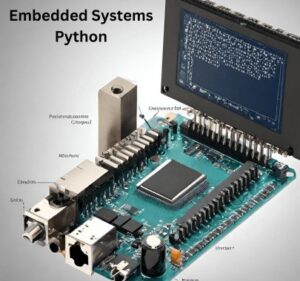
In the realm of embedded systems, there appears to be a prevailing skepticism towards Python, often seen as a language reserved for beginners while “real” developers are presumed to favor C. The sentiment, encountered even in interview settings, reflects a common perception that proficiency in Python merely involves adept Googling and code writing. Unfortunately, this outlook hampers the recognition of Python’s inherent value in our domain.
This blog aims to address this issue by delving into the reasons behind the animosity and providing insights to bridge the gap. Exploring the nuances of Embedded Python idiomatic code and establishing a mental model, this post strives to empower embedded engineers to harness the full potential of Python, making them not just proficient but more effective in their roles.
Unveiling Python: A Versatile Programming Powerhouse
Python, a versatile and general-purpose computer programming language, transcends boundaries in its applicability. From web development and automation to data analysis and software testing, Python stands as a go-to language for diverse tasks.
Guido van Rossum birthed Python in 1991, drawing inspiration for its name from his affection for the old BBC series, Monty Python’s Flying Circus. In its creation, Rossum aimed to achieve specific goals:
Intuitiveness and Power: Develop an easy, intuitive language that rivals the power of other programming languages.
Open-Source Collaboration: Establish an open-source program, inviting contributions from anyone interested in its development.
Readability: Craft code that is as readable as the English language.
Everyday Suitability: Create a tool suitable for everyday tasks.
Two decades later, Embedded Development Tools not only meets but exceeds these goals. With its readability and flexibility, Python has become one of the most preferred and widely used languages in the programming landscape.

Role of Python
Python is the most popular programming language; it is more user-friendly and versatile than Java and C#. Its importance is particularly noticeable in the quickly changing tech sector for variety of purposes like Python for IoT Applications and game creation. Python is incredibly useful for businesses, especially those in AI and machine learning, to navigate the ever-changing technical landscape. Because of its versatility and ease of use, Python is an essential tool for succeeding in the dynamic corporate world.
Decoding Python’s Mechanics
The execution of Python code involves approximately three key stages:
Initialization: CPython, the version of Python written in C, lays the groundwork during this phase. It configures essential data structures, prepares the import system, and more.
Compilation: Instead of producing code, CPython interprets it. Following interpretation, it generates bytecode—a series of instructions—which is then sent off.
Interpretation: Python’s virtual machine takes charge, interpreting and executing the generated bytecode. This orchestrated process underlines the dynamic functionality and workings of Python.

Exploring Python’s Strengths in Embedded Systems
Portability:
Python proves to be an excellent choice when portability is a priority. It seamlessly integrates with most Linux distributions and extends its support to both Windows and macOS. Across various hardware architectures, Python stands robust on all platforms of significance, making it a preferred language for embedded developers focused on Linux.
Scripting Simplicity:
Python emerges as a superior alternative to Shell or Perl scripts, especially for platform-level automation. Its simplicity in writing, reading, and debugging, coupled with powerful standard library features, positions it favorably for build system scripting needs, effortlessly tying together package management and build Embedded Development Tools.
Enhanced Productivity:
Python’s efficiency is evident in its ability to generate smaller, more concise code. Comparatively, Python code is often cited to be one-third the size of equivalent C++/Java code, translating to accelerated project timelines and heightened productivity.
Mathematical Prowess:
Born out of the mind of a mathematician, Python excels in the realms of Machine Learning and Data Science. Its proficiency in mathematical applications solidifies its standing as the go-to programming language in these fields.
Integration Testing Advantage:
Python’s seamless interoperability with other languages positions it as the preferred “glue” language for integration use cases. In the context of embedded systems, Python shines in automated integration testing (CI), adeptly handling scenarios that involve mocking I/O elements like network sockets or serial buses.
Code Generation Efficiency:
An often overlooked application of Python lies in code generation. Leveraging sound software design patterns, Python can automate the generation of boilerplate code for new features. Tools like Jinja, initially designed for HTML generation in Django, can be adapted for C/C++ code generation, streamlining development efforts.
Performance Considerations:
The perception of Python’s lower speed due to its interpreter-based runtime is a common concern. However, in practical terms, the impact on execution speed is minimal in compute-heavy scenarios, thanks to Python’s C backend handling the heavy lifting. While the extra memory required is a noteworthy consideration, Python’s performance on embedded systems often rivals that of native applications, particularly in scenarios involving I/O or compute-bound tasks. The key lies in having sufficient RAM to support Python, making it a viable and competitive choice for embedded applications.
Navigating Embedded Systems Challenges
Microcontrollers and Resource Constraints:
Large-scale deployment of embedded systems necessitates cost-effective components, emphasizing small size, high reliability, and low power consumption. Specialized microcontrollers, amalgamating CPU, memory, and peripherals on a single chip, cater to these demands. Despite their marvels, microcontrollers pose constraints, with limited RAM, ROM, and processing capability—far from an ideal environment for running Python.
Python’s Value Across Lifecycle:
While projects adopting Python for embedded applications are in the early stages, standard Python proves invaluable throughout an embedded system’s lifecycle. Resource constraints push embedded devices to rely on standard PCs for tasks like software compilation, troubleshooting, and diagnostics. Python excels in writing support code for PCs, offering ease of learning, rapid development, and highly readable code.
Advantages of Python for Support Code:
Python’s features make it a preferred choice for support code on standard PCs during embedded software development. Its easy learning curve, rapid development pace, readability, and compactness are crucial. Python’s object-oriented facilities, simple yet powerful, ease the adoption of OOP in embedded development. The language’s compactness is vital, considering the necessity to express designs in minimal code, while automated memory management aids developers with little experience in dynamic memory allocation.
Python’s Role in Embedded System’s Growth:
As embedded systems evolve, Python’s advantages become pivotal. Python adoption spans various areas of the embedded system lifecycle, from controlling the software build process to stress tests and unit testing. Python’s flexibility in creating a build system, compatibility with different compilers, and applications in control panels and code generation showcases its adaptability. An exciting application emerges in the form of a device simulator, facilitating software development in the early stages when hardware is limited.
Empowering Future Innovations:
Python’s versatility extends beyond experienced engineers to embrace student interns with varying levels of programming expertise. Even those with limited prior experience can achieve significant results with Python, demonstrating its user-friendly nature and reduced need for constant supervision compared to other languages.
At VAct Technologies, the journey of crafting self-contained, autonomous devices is an ongoing and exhilarating endeavor. As the concept of micro-monoliths evolves into reality, the role and intricacy of embedded software amplify. Python emerges as a catalyst, significantly simplifying the development, testing, control, and deployment of such software. Its user-friendly features are not only fostering innovation but also illuminating the path to the future of computing.
Enroll today with VAct Technologies to delve deeper into the myriad benefits of Python for Embedded Systems. Uncover the full spectrum of possibilities and enhance your skills for the ever-evolving landscape of embedded development.
